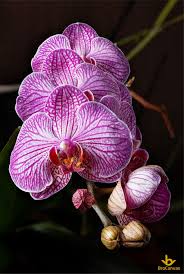# Common Misunderstandings About Caring for White Egg Orchids

## Table of Contents
1. **Introduction**
2. **Understanding White Egg Orchids**
– 2.1. What Are White Egg Orchids?
– 2.2. Popular Varieties of White Egg Orchids
3. **Common Misunderstandings**
– 3.1. Orchids Are Hard to Grow
– 3.2. Orchids Require Constant Attention
– 3.3. All Orchids Need the Same Care
– 3.4. Orchids Only Bloom Once a Year
– 3.5. More Water Means Healthier Orchids
– 3.6. Orchids Can’t Thrive in Low Light
– 3.7. Fertilizing Orchids is Complicated
– 3.8. All Orchid Roots Are the Same
– 3.9. Pests Are the Only Threat to Orchids
– 3.10. Repotting is Always Necessary
4. **Debunking the Myths**
– 4.1. Reality Check on Growing Orchids
– 4.2. Understanding the Care Needs
– 4.3. The Blooming Cycle Explained
– 4.4. Watering and Light Requirements
– 4.5. Fertilization and Soil Health
– 4.6. Pest Management and Orchid Health
5. **Best Practices for Orchid Care**
– 5.1. Creating the Ideal Environment
– 5.2. Proper Watering Techniques
– 5.3. Understanding Light Conditions
– 5.4. Choosing the Right Fertilizer
– 5.5. Monitoring for Pests and Diseases
6. **Conclusion**
7. **FAQs**
—
## 1. Introduction
Caring for White Egg Orchids (*Phalaenopsis*) can be a rewarding experience, yet it is often surrounded by misconceptions that lead to frustration among both novice and experienced growers. These misunderstandings can result in poor care practices, ultimately affecting the health and beauty of these stunning plants. This article aims to clarify some of the most common misconceptions about caring for White Egg Orchids, providing you with the knowledge needed to cultivate these orchids successfully.
## 2. Understanding White Egg Orchids
Before addressing the misunderstandings, let’s start with a brief overview of what White Egg Orchids are.
### 2.1. What Are White Egg Orchids?
White Egg Orchids, known for their elegant white blooms, are one of the most popular orchids in the world. They are part of the *Phalaenopsis* genus, which is native to Southeast Asia. These orchids are appreciated not only for their beauty but also for their relatively straightforward care requirements compared to other orchid varieties.
### 2.2. Popular Varieties of White Egg Orchids
Several varieties of White Egg Orchids are commonly cultivated, including:
– **Phalaenopsis amabilis**: Known as the “moon orchid,” it features large, fragrant white flowers.
– **Phalaenopsis schilleriana**: This variety has white flowers with purple markings and is known for its attractive foliage.
– **Phalaenopsis stuartiana**: A smaller orchid with elegant white blooms and unique leaf patterns.
## 3. Common Misunderstandings
### 3.1. Orchids Are Hard to Grow
Many believe that orchids, particularly White Egg Orchids, are difficult to grow and require specialized knowledge. In reality, while they do have specific needs, they are not inherently challenging to care for. With the right information and practices, anyone can successfully cultivate these beautiful plants.
### 3.2. Orchids Require Constant Attention
Another common myth is that orchids demand constant care and attention. While regular monitoring is essential, especially regarding watering and light conditions, they do not require daily attention. Once you understand their needs, you can care for them efficiently without constant oversight.
### 3.3. All Orchids Need the Same Care
It’s a misconception that all orchids have identical care requirements. Different species of orchids, including White Egg Orchids, have varying needs regarding light, temperature, humidity, and watering. Understanding the specific requirements of *Phalaenopsis* orchids is crucial for their successful cultivation.
### 3.4. Orchids Only Bloom Once a Year
Many believe that orchids bloom only once a year. While some orchids may have a seasonal blooming cycle, White Egg Orchids can produce multiple blooms throughout the year with proper care. Some growers enjoy blooming cycles every few months.
### 3.5. More Water Means Healthier Orchids
One of the most prevalent misunderstandings is that watering orchids more frequently will lead to healthier plants. In fact, overwatering can lead to root rot and other serious issues. It’s essential to understand the right balance of moisture for your orchids.
### 3.6. Orchids Can’t Thrive in Low Light
While it’s true that orchids need bright, indirect light, many people assume that they cannot survive in low-light conditions. White Egg Orchids can adapt to lower light levels, although they may not bloom as frequently. With proper care, they can thrive in moderate light environments.
### 3.7. Fertilizing Orchids is Complicated
Many growers fear that fertilizing orchids is a complicated process. In truth, fertilizing White Egg Orchids is relatively straightforward. Using a balanced orchid fertilizer at the right intervals is all that’s needed to promote healthy growth.
### 3.8. All Orchid Roots Are the Same
There is a misconception that all orchid roots function similarly. However, White Egg Orchids have specific root characteristics. Their roots are typically thicker and more robust than those of other orchid varieties, allowing them to store moisture and nutrients efficiently.
### 3.9. Pests Are the Only Threat to Orchids
While pests can be a significant concern, they are not the only threat to orchids. Factors such as poor watering practices, inappropriate light conditions, and insufficient humidity can also harm the health of your orchids.
### 3.10. Repotting is Always Necessary
Some growers believe that repotting their orchids is always necessary. While repotting can benefit the plant, especially when it outgrows its pot or when the potting medium breaks down, it is not required every year. Understanding when and how to repot is key.
## 4. Debunking the Myths
Now that we have identified these common misunderstandings, let’s delve deeper into the realities of caring for White Egg Orchids.
### 4.1. Reality Check on Growing Orchids
Growing orchids can be easy if you equip yourself with the right knowledge. Research the specific needs of *Phalaenopsis* orchids, and familiarize yourself with their growth patterns and care requirements. Resources such as books, online forums, and local gardening clubs can provide valuable insights.
### 4.2. Understanding the Care Needs
While orchids do require certain care routines, once established, they can thrive with minimal fuss. Create a care schedule that includes regular watering, fertilizing, and monitoring of light and humidity.
### 4.3. The Blooming Cycle Explained
White Egg Orchids are known for their ability to bloom multiple times a year. Factors that influence their blooming include light, temperature, and the plant’s overall health. To encourage blooming, provide adequate light and ensure they are not stressed by overwatering or under-fertilizing.
### 4.4. Watering and Light Requirements
Orchids thrive on a balance of moisture. Water your White Egg Orchids when the potting medium feels dry to the touch, typically every 7-10 days. For light, aim for bright, indirect sunlight. If you notice leaves turning yellow, adjust the light exposure accordingly.
### 4.5. Fertilization and Soil Health
Fertilizing your orchids does not have to be complex. Use a balanced orchid fertilizer diluted to half strength, applying it every two weeks during the growing season and reducing it to once a month in the winter. Ensure your potting medium is fresh and provides adequate drainage.
### 4.6. Pest Management and Orchid Health
Regular inspections for pests are essential, but don’t forget to monitor other aspects of plant health. Make a habit of checking for signs of stress, such as yellowing leaves or wilting flowers, which can indicate issues beyond pest infestations.
## 5. Best Practices for Orchid Care
To ensure the health and vitality of your White Egg Orchids, here are some best practices to follow.
### 5.1. Creating the Ideal Environment
– **Light**: Place your orchids in a location that receives bright, filtered light. East-facing windows are often ideal.
– **Humidity**: Maintain humidity levels between 50-70%. Use a humidity tray or mist your orchids regularly.
– **Temperature**: Aim for a temperature range of 65°F to 80°F (18°C to 27°C) during the day, with cooler temperatures at night.
### 5.2. Proper Watering Techniques
1. **Watering Schedule**: Establish a regular watering routine based on environmental conditions. Adjust the frequency during different seasons.
2. **Soaking Method**: Soak the potting medium thoroughly until water drains out of the bottom, ensuring the roots receive adequate moisture.
### 5.3. Understanding Light Conditions
Observe your orchids and adjust their location as needed. If leaves appear dark green, they may need more light; yellow leaves could indicate too much light.
### 5.4. Choosing the Right Fertilizer
Select a fertilizer specifically formulated for orchids. Follow the manufacturer’s instructions for dilution and application frequency to avoid nutrient imbalances.
### 5.5. Monitoring for Pests and Diseases
Inspect your orchids regularly for signs of pests or diseases. If you
notice any issues, treat them promptly using appropriate measures, such as insecticidal soap or neem oil.
## 6. Conclusion
Caring for White Egg Orchids does not have to be a daunting task. By dispelling common myths and understanding the true needs of these beautiful plants, you can cultivate a thriving environment for your orchids. With the right practices and a little patience, you will enjoy the stunning blooms and beauty that White Egg Orchids bring to your home.
## 7. FAQs
**Q1: How often should I water my White Egg Orchids?**
A: Water your orchids once a week, adjusting based on humidity and temperature.
**Q2: When should I repot my White Egg Orchids?**
A: Repot every 1-2 years, preferably after blooming.
**Q3: What type of fertilizer should I use for my orchids?**
A: Use a balanced orchid fertilizer with a higher phosphorus content to encourage blooming.
**Q4: How can I tell if my orchids are getting enough light?**
A: If the leaves are a rich green color, your orchids are likely getting enough light. Yellowing leaves may indicate too much light, while dark green leaves may suggest insufficient light.
**Q5: What pests should I watch for on my orchids?**
A: Common pests include aphids, spider mites, and mealybugs. Regular inspections will help you catch any infestations early.
—
This article aims to equip orchid enthusiasts with the knowledge to dispel myths and promote healthy care practices for White Egg Orchids, allowing them to thrive and bloom beautifully in your home.

